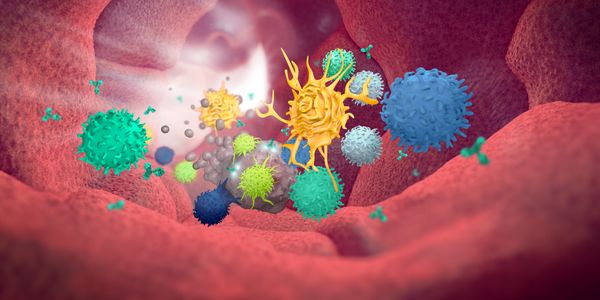Systems Biology
Systems Biology: Systems biology is the computational and mathematical modeling of complex biological systems. It is a biology-based interdisciplinary field of study that focuses on complex interactions within biological systems, using a holistic approach to biological research.
-
The treatment of cancer has remarkably improved because of increased knowledge of the molecular abnormalities that drive human cancer growth. This has led to the development of ever more eff...
OCT 20, 2020 | 9:00 AM
DATE: October 20th, 2020 TIME: 08:00am PT, 11:00am ET Tumor-associated macrophages (TAMs) are key cells in the tumor microenvironment (TME) with diverse immune functions that have a major in...
OCT 15, 2020 | 9:00 AM
Date: October 15, 2020 Time: 9:00am (PDT), 12:00pm (EDT) Renal transporters play an important role in potential clinical drug-drug interactions (DDIs) as highlighted in the FDA, EMA and PMDA...
OCT 13, 2020 | 5:00 AM
Date: October 13, 2020 Time: 5:00am (PDT), 8:00am (EDT) Dr. Markus Kostrzewa shall ellaborate the progress that has been made in Bruker Microbiology Research and Development, including new p...
Multiplex detection of oncogenic mutations using LNA-based assays on the QIAcuity digital PCR system Digital PCR (dPCR) enables specific and sensitive detection of genetic alterations in onc...
Speaker:
Dr. Özlem Karalay
The continued rapid expansion of immunotherapies, including both in vivo and ex vivo therapeutics, has driven the development and adoption of novel tools to study, asses and understand these...
Speaker:
Benjamin Borgo, PhD
OCT 08, 2020 | 9:00 AM
Date: October 8, 2020 Time: 9:00am (PTD), 12:00pm (EDT), 5:00pm (GMT) Small DNA viruses require both host DNA replication and repair factors for their replication. The host cell replication...
Mutations in the epidermal growth factor receptor gene (EGFR) and the known Kirsten rat sarcoma viral oncogene (KRAS) are significant drivers in the development of non-small-cell lung cancer...
Speaker:
Hestia Mellert, PhD
Presented at: Cancer Research & Oncology Week Virtual Event Series 2020
Sponsored By: Bio-Rad Laboratories
Sponsored By: Bio-Rad Laboratories
Individuals of under-represented minority ancestry are at disproportional risk for higher incidence and mortality rates for particular cancers. The unequal burden of cancer in certain racial...
Speaker:
Steven R. Patierno, PhD
OCT 08, 2020 | 7:00 AM
DATE: October 8, 2020 TIME: 7:00am PDT, 10:00am EDT, 4:00pm CEST How often do you pipette in your cell culture lab every day? Usually, we do it so often that we tend stop thinking about ho...
Learning Objectives: 1. Understand the evolving epidemiology of prostate cancer in the the US and globally, and the excess burden of disease borne by men of African ancestry 2. Describe the...
Speaker:
Matthew R. Cooperberg, MD
Tumor phenotypes are dictated not only by the neoplastic cell component, but also by the tumor microenvironment (TME), which is inherently immuno-suppressive, is equipped to hamper effector...
Speaker:
Dr. Sergio Rutella
Presented at: Cancer Research & Oncology Week Virtual Event Series 2020
Sponsored By: NanoString Technologies
Sponsored By: NanoString Technologies
Robotic partial nephrectomy (RPN) has increasingly been applied to the treatment of small renal masses. Because of space limitations and the size of the robot at the patient side, the standa...
























